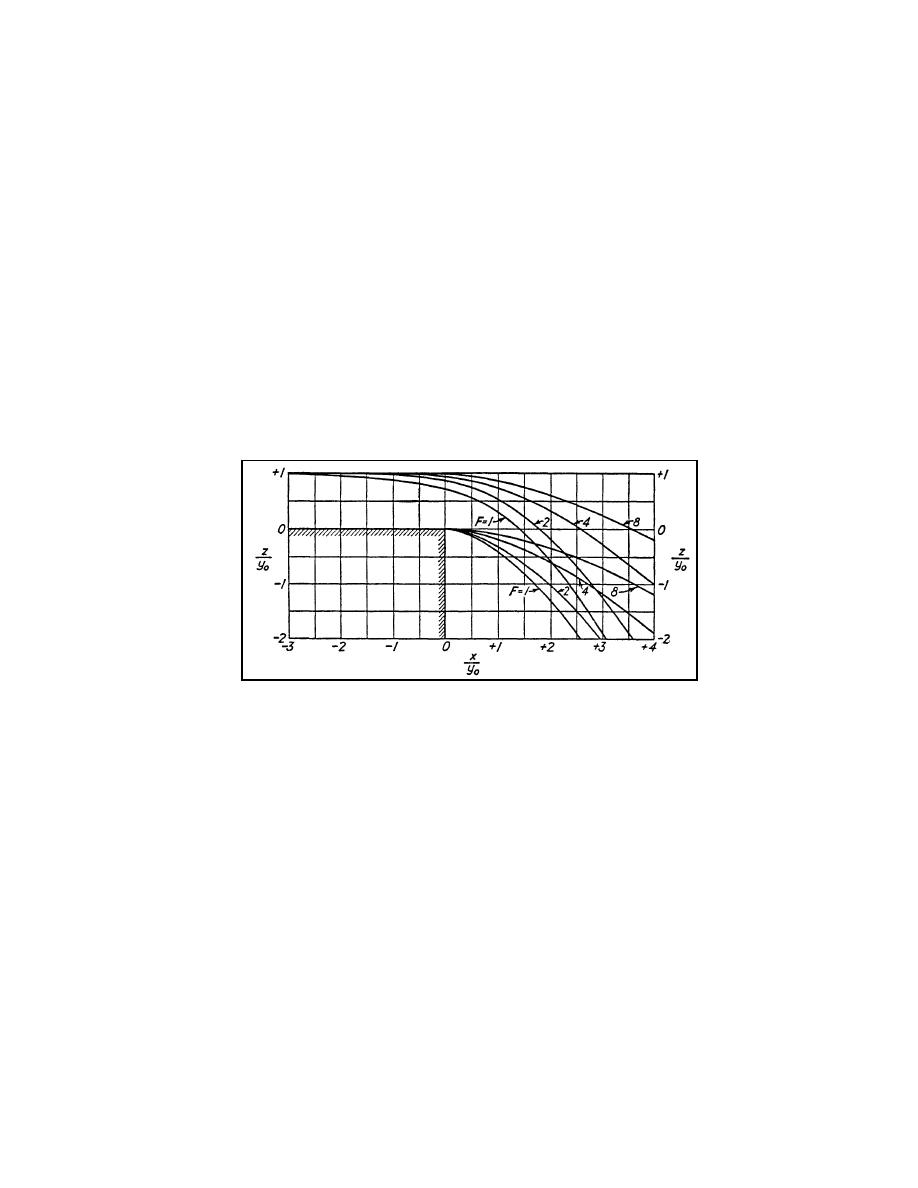
Note:
1. The equations are for a well-aerated nappe. If the nape is poorly or not aerated, the nappe
will move upstream until in contact with the vertical wall.
2. If the tailwater depth, y2, is less than yc, the hydraulic jump will move downstream.
3. If the tailwater depth, y2, is larger than yc, the jump will move upstream and the jump will be
submerged.
4. For upstream subcritical flow the brink serves as the control and the subcritical approach flow
goes through critical 3 to 4 yc upstream of the brink (Chow, 1959, p. 44).
5. For upstream supercritical flow the control for the flow is upstream and the profile for the
nappe is a function of the approach Froude number. Ippen (1950, p. 533) gives a composite
plot of nappe profiles for different values of the Froude number (Figure 2.25).
Figure 2.25. Nappe profiles for supercritical flow (Ippen 1950).
2.7 FLOW IN BENDS
2.7.1 Types of Bends
Two principal types of bends are deepened or entrenched bends and meandering surface bends.
The first type includes those in which the river bends follow the curves of the valley so that each
river bend includes a promontory of the parent plateau. The second type includes bends which
are formed only by the river on a flat, alluvium covered valley floor, and where the slopes of the
valley are not involved in the formation of such bends. This division of bends is correct and
sufficiently definitive with respect to external forms of the relief and the processes of formation
and development of bends. It is, however, incomplete from the standpoint of the work of the river
and of the physical nature of this phenomenon. Both of these types of bends can be put into one
category--the category of freely meandering channels, i.e., meandering determined only by the
interaction of the stream and the bed material. Such meandering when not disturbed by the
influence of external factors, proceeds at an approximately equal rate along the length of the
river.
2.45




 Previous Page
Previous Page
